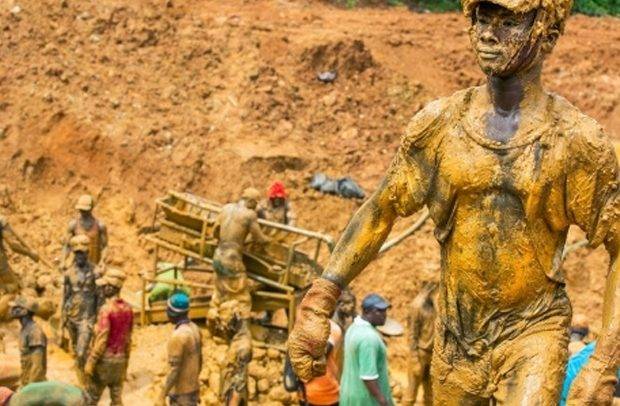Galamsey and Environmental Degradation in Ghana:
Galamsey, a local term in Ghana meaning "gather them and sell," refers to illegal small-scale gold mining. This phenomenon has become a widespread issue across the country, causing profound environmental degradation. As gold prices have surged on the international market, many individuals, often without proper mining licenses, have flocked to mining areas in search of wealth. However, this illegal activity is leaving behind a trail of environmental destruction, threatening the ecological integrity of Ghana's natural resources.
Historical Context and Drivers of Galamsey
Mining has long been part of Ghana’s economic activities, with gold production dating back to ancient times. Traditionally, local communities engaged in small-scale mining with relatively low environmental impacts. However, in recent decades, the scale of galamsey has grown exponentially, driven by the increasing demand for gold and the limited enforcement of mining regulations. Unemployment, poverty, and lack of economic opportunities, especially in rural areas, have also fueled the rise of galamsey, as individuals seek immediate financial gains.
Foreign involvement, particularly from Chinese miners, has added a new dimension to the problem. These foreign operators often bring in heavy machinery that enables larger-scale operations, exacerbating the environmental damage. The influence of illegal mining syndicates and the involvement of local authorities have further complicated efforts to curb the practice.
Environmental Impact of Galamsey
Galamsey has had devastating effects on Ghana’s environment, particularly its water bodies, forests, and farmlands. The illegal miners often disregard environmentally safe mining practices, leading to severe consequences.
Water Pollution: One of the most immediate and visible impacts of galamsey is the contamination of rivers and water bodies. Mercury and cyanide, commonly used in the gold extraction process, are discharged into rivers, polluting drinking water sources for communities. The contamination of major rivers such as the Pra, Ankobra, and Offin has endangered aquatic life and disrupted the livelihoods of people who depend on these water bodies for fishing and farming.
Deforestation and Habitat Destruction: Illegal mining often occurs in forest reserves and protected areas. In their quest for gold, miners clear vast tracts of land, leading to deforestation and loss of biodiversity. The destruction of forests, which serve as carbon sinks, contributes to climate change and leaves the land prone to erosion and flooding. This degradation also affects wildlife, as their habitats are destroyed, threatening the survival of species endemic to these regions.
Soil Degradation: The uncontrolled digging and removal of topsoil during mining activities degrade the land, rendering it unsuitable for agriculture. This has serious implications for food security, as vast areas of arable land are left barren. The use of harmful chemicals in mining also seeps into the soil, further degrading its quality and making it toxic for plants.
Health Risks: The toxic chemicals used in illegal mining not only affect the environment but also pose significant health risks to local communities. Mercury, for instance, can enter the food chain through contaminated water and fish, leading to serious health issues such as neurological disorders and developmental defects, particularly in children.
Efforts to Combat Galamsey
The Ghanaian government has recognized the severity of the galamsey problem and has made efforts to address it. In 2017, the government launched a national anti-galamsey task force known as “Operation Vanguard,†which was aimed at clamping down on illegal miners and restoring degraded lands. Additionally, a temporary ban on small-scale mining was imposed to allow for the regulation of the sector.
Despite these efforts, galamsey persists due to challenges such as corruption, lack of enforcement, and the socio-economic drivers that push individuals into illegal mining. There is also the issue of weak collaboration between local authorities and central government agencies, making it difficult to sustain the fight against galamsey.
Conclusion
Galamsey remains a significant environmental threat in Ghana, undermining efforts to achieve sustainable development. The long-term impacts on the environment, health, and livelihoods of communities are dire. To effectively tackle the issue, it is essential to strengthen regulatory frameworks, improve enforcement, and provide alternative livelihood options for those involved in illegal mining. Sustainable mining practices must be encouraged, with an emphasis on protecting the environment for future generations. The fight against galamsey requires a coordinated effort from all stakeholders, including the government, civil society, and local communities.


